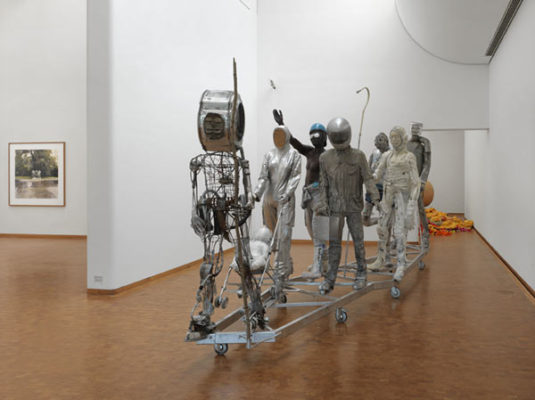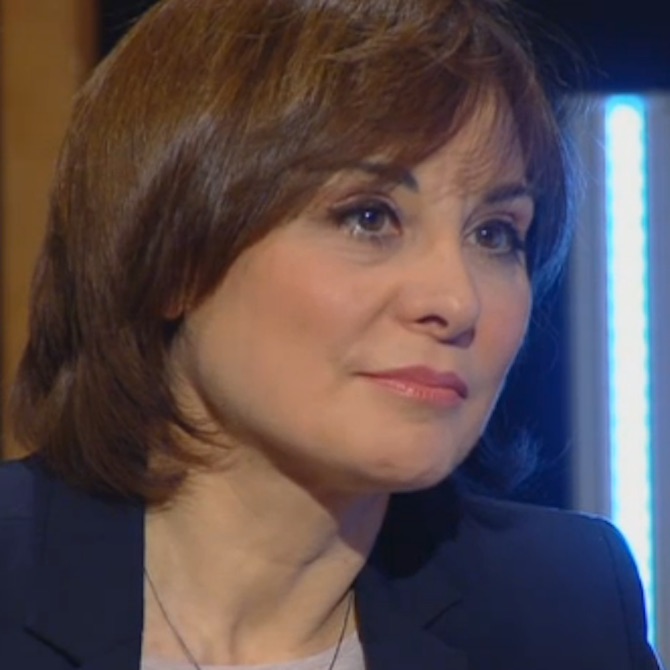Search
To search for an exact match, type the word or phrase you want in quotation marks.
A*DESK has been offering since 2002 contents about criticism and contemporary art. A*DESK has become consolidated thanks to all those who have believed in the project, all those who have followed us, debating, participating and collaborating. Many people have collaborated with A*DESK, and continue to do so. Their efforts, knowledge and belief in the project are what make it grow internationally. At A*DESK we have also generated work for over one hundred professionals in culture, from small collaborations with reviews and classes, to more prolonged and intense collaborations.
At A*DESK we believe in the need for free and universal access to culture and knowledge. We want to carry on being independent, remaining open to more ideas and opinions. If you believe in A*DESK, we need your backing to be able to continue. You can now participate in the project by supporting it. You can choose how much you want to contribute to the project.
You can decide how much you want to bring to the project.

Kaspar König is retiring and doing so with a group exhibition at the Ludwig Museum in Cologne, the institution that he has directed for twelve years. With “Before the Law”, König once again makes a declaration of principles: art should talk about the big issues, whatever the circumstances. And the subject, in this case, is the human condition.
Skulptur Projekte in Münster, Portikus in Frankfurt and Städelschule in Frankfurt are just a few of the projects/institutions that have been founded or directed by Kaspar König, a key figure in determining the criteria and discourse that have governed the art scene in the last few years. With “Before the Law”, König makes clear his way of understanding art and his relation with it, as well as his curatorial vision. The exhibition takes its title from a story by Kafka, in which a man from the country endeavours to gain access to where the law is. The desired moment never arrives, as a doorkeeper eternally postpones his entry. Kafka’s parable, in which there is a within and without of the law, translated into spatial terms, connects not just with the fragility of the man from the country, that extends to the human condition, but also with questions surrounding who determines the law, for whom, who is excluded and how.
To make the reflection more timeless, or more current, the exhibition takes a very specific historic moment as its starting point, the years following the Second World War, as the paradigm of the annihilation of human rights and dignity, and links it directly to the present, when there hasn’t been a great war, but yes many, dispersed, continuous and even some underground wars, in which the human being once again becomes extremely vulnerable. It seems as if we have access to a lot of information, that we are conscious of our rights, however, at the same time there are a lot of contradictory signs. Have we lost our liberty? Or have we gained it? Is it possible that one day the question will be raised publicly of whether we can still permit human rights?
“Before the Law” is a classical exhibition in its approach as much as in its formal presentation. König talks of the humanistic potential of contemporary art, of the need for art to propose existential questions. The works (figurative sculptures and installations, as indicated in the subtitle of the exhibition) have room to breathe there is no interference between them, albeit a connecting thread guides the spectator through the rooms. The pieces are left “to speak for themselves” (and it seems they do). There is no specific contextualisation, nor documents, publications, or documentary videos or films. Even though the subject would permit it. Though there are various talks being held in different cities (Brussels, London, Köln, Munich and Berlin). And there is a confrontation between the post-war figurative sculptures, which transmit all the insecurity and fragility that can accompany the human being and the contemporary installations, more resigned and ironic. While in the post-war sculptures the beings that appear represented cry out for shelter and protection, the contemporary proposals, that evoke the same fragility as their predecessors, can no longer call for this refuge, as they know that it doesn’t exist. And in this comparison numerous pathways are traced: the one that begins with the sculpture of the isolated leg (1958) by Alberto Giacometti, continues on the carousel that turns in slow agony dragging the animal cadavers of Bruce Nauman (1988), leaps to the lucky coin (a tiny centime shown in a huge vitrine) found by Andreas Slominski (1996) and ends with the fragmented and recomposed tree (1997/2011) by Zoe Leonard. And another possible itinerary that goes from the “Sibylla (Justitia)” (1957) that Joseph Beuys made for the law courts of Düsseldorf, continues with the South African conflicts of “Felix in Exile” (1994) by William Kentridge, contemplates the derogatory way that the North American authorities (starting with Roosevelt himself) saw the Native Indian Americans in “Building a Nation” (2006) by Jimmie Durham, and ends with the remake of the burgers of Calais (defending a city under siege in the 15th century) converted into “Bródno People” (2010) by Pawel Althamer, with the collaboration of the citizens of Bródno, or the “exclusions” carried out by the powers that be (legislative, executive and judicial) through the abundant material collected up by Andreas Siekmann in “Dante and Virgil walk through the World” (2011). It seems that things have changed a lot during this last century, but in some essential aspects we are closer to the post-war era than we imagine.
Aside from its quality, indisputable, “Before the law” is a agile exhibition in many senses: it functions as a “curatorial statement”, it incorporates an intergenerational dialogue by including Thomas Trummer as the co-curator and the collaborations of Anna Brohm and Andreas Prinzing, it includes a considerable number of pieces from the museum’s own collection and reckons with the necessary co-production of the Siemens Foundation.
Photo: Achim Kukulies © Pawel Althamer, Courtesy Sammlung Goetz

Montse Badia has never liked standing still, so she has always thought about travelling, entering into relation with other contexts, distancing herself, to be able to think more clearly about the world. The critique of art and curating have been a way of putting into practice her conviction about the need for critical thought, for idiosyncrasies and individual stances. How, if not, can we question the standardisation to which we are being subjected?
www.montsebadia.net
"A desk is a dangerous place from which to watch the world" (John Le Carré)